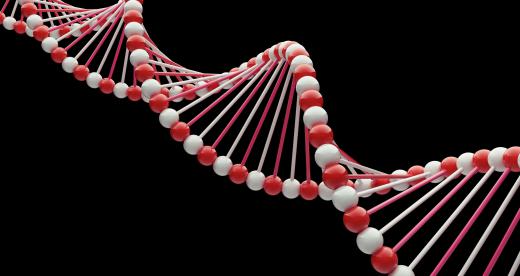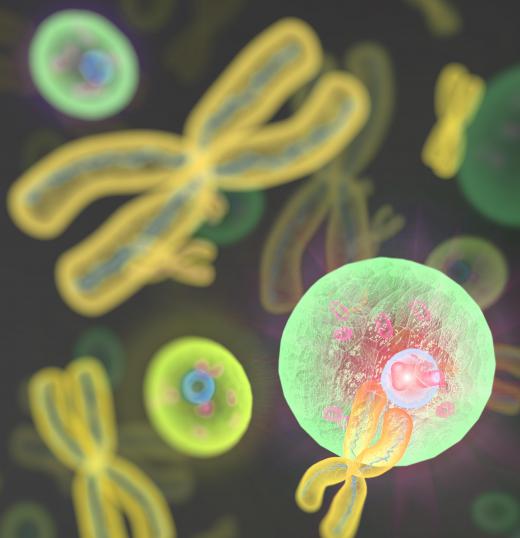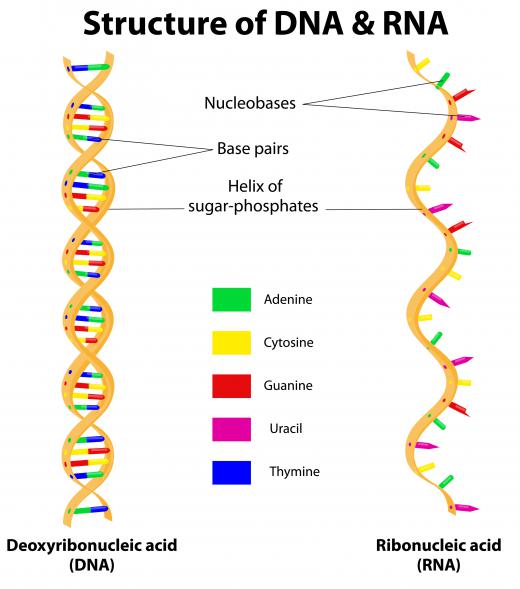What are Histones?
Histones are structures in eukaryotic cells and some single-celled microorganisms of the phylum Euryarchaeota that serve as spools around which the cell’s deoxyribonucleic acid (DNA) wraps very closely. Without the space conservation that histones enable, cells could not contain their own DNA. Histones also play important roles in gene expression by enabling or hindering the access of transcription-active molecules to the DNA genes. A third task is to maintain structural integrity of the DNA and of the much larger chromosome.
The substances that comprise histones are proteins that differ little from species to species. The most common proteins are called H1/H5, H2A, H2B, H3 and H4. The DNA is bound closely to the histones by the attraction between the side groups of the histone proteins and the DNA. This attractive force is modified by the addition of acetyl or methyl groups to a few lysine or arginine amino acids near the end of the H3 and H4 proteins. The tightening or loosening of the DNA strand results in the genes being accessible or inaccessible, known as turning the gene "on" or "off."

In most cells, regardless of source, eight histone proteins, consisting of two each of H2A, H2B, H3 and H4, form an octet structure. Approximately 146 base pairs of DNA wrap around the octet structure almost twice to form a "nucleosome." A short loop of DNA, stabilized by the H1 protein or its H5 analog, leads to the next nucleosome, forming a structure that is often characterized as "beads on a string." The nucleosomes and their linking DNA sections form tight spirals, with six nucleosomes per turn, to make what are called chromatin fibers. The fibers pack together to form a chromosome.

Histone proteins H2A, H2B, H3 and H4 are of relatively low molecular weight, consisting of 120 to 135 amino acids per protein molecule. Histones H1/H5 are much longer and give structural framework to the nucleosomes, much like a steel rod linking a series of disks. In human cells, if all the DNA were uncoiled and laid end to end, the strand would be about 70 inches long (1.8 m) yet only about 0.0000007 inches thick (180 nanometers). By coiling and recoiling the substructures, the 23 pairs of chromosomes function in a nucleus that is itself less than 0.0004 inches (10 micrometers) in diameter. Histones make this folding possible by controlling the molecular environment.

Histones were initially thought to have only the types mentioned above. Research, however, has pointed to much more diversity than was previously accepted. The basic molecules are still relatively the same even between organisms as divergent as yeast and mammals. This trait is called evolutionary conservation. It indicates that even slight variations in these molecules result in cells that either could not thrive or would reproduce and cause damage and evolutionary penalties to the organism.
AS FEATURED ON:
AS FEATURED ON:













Discuss this Article
Post your comments